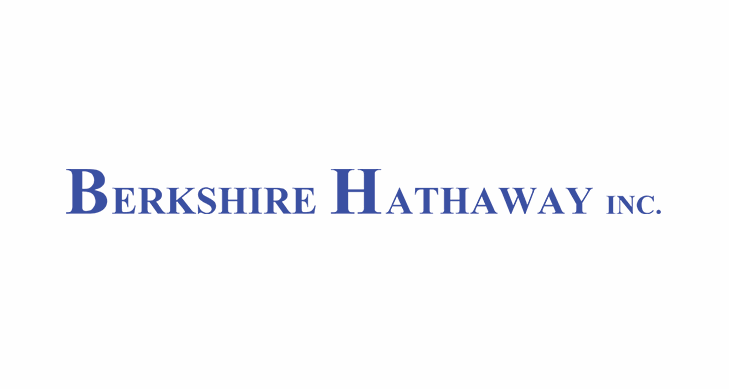 24-02-2020
24-02-2020
Berkshire Hathaway’s reinsurance division falls to loss in 2019

 Insurance Alertss
Insurance AlertssBerkshire Hathaway’s reinsurance division falls to loss in 2019
Berkshire Hathaway’s insurance earnings dipped in 2019 as reinsurance related businesses suffered and dragged that segment of the Warren Buffett owned conglomerate to a loss for the year.
The Berkshire Hathaway Reinsurance Group fell to an underwriting loss of -$1.472 billion for 2019, worse than 2018’s -$1.109 billion. Impacting the insurance and reinsurance related businesses during the underwriting year were lower insurance related profits on the primary and specialty side, as well as higher reinsurance losses.
Reinsurance losses included roughly $1 billion of major catastrophe losses in 2019, down from $1.6 billion in 2018 and $3 billion in 2017. Overall, Warren Buffett’s insurance related businesses reported an after-tax earnings underwriting profit of $325 million in 2019, compared to $1.6 billion of profit in 2018. “Earnings from primary insurance operations were lower in 2019 and losses from reinsurance were higher than in 2018,” the company explained.
While 2019’s underwriting result at Berkshire Hathaway also appears to have been hit by “lower earnings from reductions of estimated ultimate liabilities for prior years’ property/casualty loss events as compared to 2018.” That suggests that reserves in the P&C business have moved less favourably in 2019, which aligns with the reports of other major re/insurers, some of which have reported some hardening of reserves in recent days (such as Swiss Re and Allianz).
On the investment side of Warren Buffett’s insurance businesses, income in 2019 increased 21.4% over 2018, helping to drive better profits despite the negative impacts reported. Insurance investment income amounted to a massive $5.530 billion for 2019, showing once again that even when underwriting conditions are less profitable, Berkshire Hathaway can still generate significant earnings for its shareholders on the insurance float side.
In fact, insurance related investment float reached a massive $129 billion at December 31st 2019, up from $123 billion at December 31st 2018. Berkshire Hathaway’s primary auto insurance arm GEICO generated an impressive underwriting profit of $1.506 billion for 2019, although that is down significantly on the prior years $2.449 billion. Hurting GEICO in 2019 was a 10% increase in losses and loss adjustment expenses, reflecting “continuing increases in loss severities, slightly offset by lower storm-related losses.”
The Berkshire Hathaway Primary Group reported positive underwriting income of $383 million, again down on 2018’s figure which was $670 million. A 5 percentage points higher loss ratio dented earnings here, as well as the already mentioned lower reductions for prior year loss events than reported in the prior year (roughly 30% lower), largely driven by higher commercial auto and other liability losses.
But it is the reinsurance group where the worst impacts of losses, prior year impacts and catastrophes were felt, as the Berkshire Hathaway Reinsurance Group reported a loss of -$1.472 billion for 2019, lower than 2018’s -$1.109 billion. Warren Buffett’s reinsurance businesses had a lower level of major catastrophe losses to deal with in 2019, so P&C reinsurance did profit, albeit only slightly, but retroactive reinsurance experienced a challenging year and dragged down results.
Premiums written rose to $10.428 billion in P&C reinsurance, up 10.8% or over a billion on 2018. But the P&C reinsurance underwriting income only ended the year at $16 million, so just over break-even. Life and health reinsurance businesses generated income of $326 million, while the retroactive reinsurance segment fell to an underwriting loss of -$1.265 billion and periodic payment annuity business fell to a loss of -$549 million.
P&C reinsurance was hit by higher losses and loss adjustment expenses of $7.3 billion in 2019, on on 2018’s $6.9 billion and 2017’s $7.2 billion, even though major catastrophe losses were down on the prior two years. Again, lower gains from net decreases in estimated ultimate claim liabilities for prior years’ loss events is part of the reason, as these only came out as approximately $295 million in 2019 for the P&C reinsurance business, compared to $469 million in 2018. In addition, the P&C reinsurance businesses of Berkshire Hathaway reported an increase in underwriting expenses for the year, which dented profits further. This figure has risen each year of late, suggesting a challenge in controlling costs in the P&C business as it scales.
The retroactive reinsurance segment, which includes the results of Berkshire Hathaway’s huge adverse development contract with insurance giant AIG, reported pre-tax underwriting losses of $1.189 billion in 2019, up on the $947 billion reported in 2018. But denting this segment was a $378 million increase in estimated ultimate liabilities for prior years’ retroactive reinsurance contracts, compared to a decrease of $341 million in 2018.
So the majority of the impacts felt by Berkshire Hathaway’s reinsurance businesses, aside from the billion dollars of major catastrophe losses, appears to have been deterioration in prior year positions on certain longer tailed casualty and retroactive reinsurance contracts. Those prior-year factors have driven the reinsurance division to its overall underwriting loss, caused the P&C reinsurance business to only barely break-even, and have driven significant negativity in the retroactive reinsurance segment. Overall though, insurance and reinsurance still remains a key driver of profit for Warren Buffett’s conglomerate, with insurance investment float still his engine driving profits across the enterprise and still growing, so likely to remain that significant to the overall business.
Source: Reinsurance News

http://www.insurancealertss.